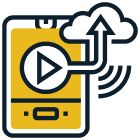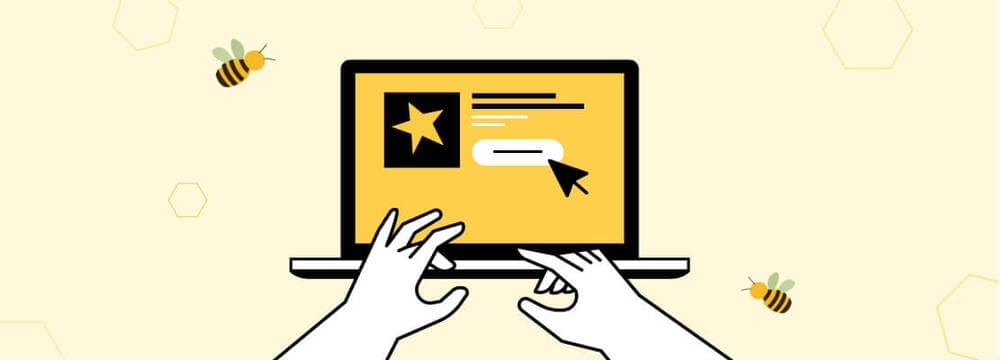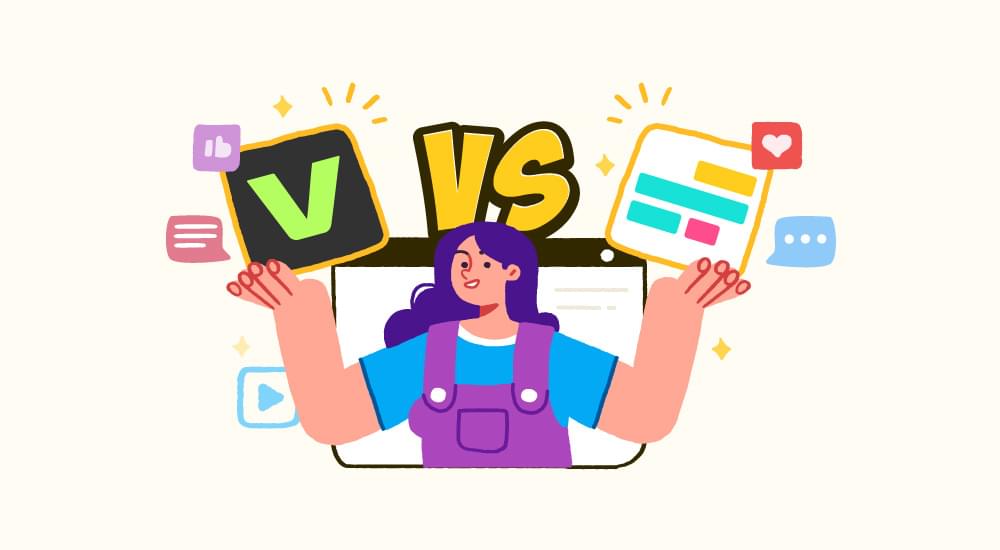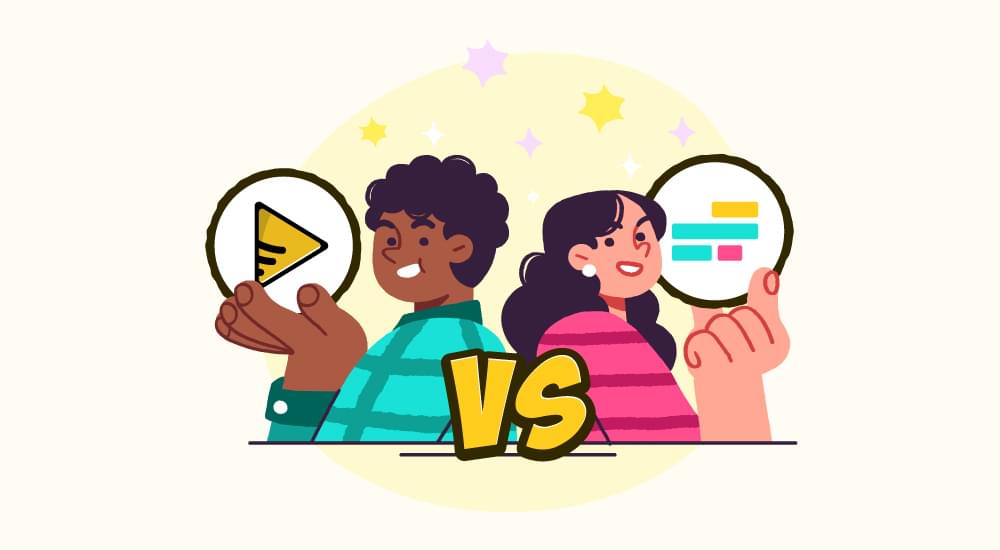
video tutorials for social media
Podcast Renaissance with Subtitles: Podcast-to-Text Guide 2024
Hey podcasters, you know how transcribing your podcasts is a bit of a pain, but it’s essential to reach a wider audience. Auto-subtitling has really shaken up the podcast world lately, but does it have to be such a hassle? Not at all! With the right tools and techniques, creating podcast subtitles can be super easy. Turning your audio content into written text can make it more accessible and easy to discover.
If you’re on the hunt for a reliable auto-subtitling solution, you’ve come to the right spot. Our innovative AI-based auto-subtitle generator, SubtitleBee, ensures accurate and flawless podcast subtitles, taking the stress out of transcription for podcasts.
Let’s discuss all about the audio boom, the growing demand for podcast-to-text, and how transcribing trending podcasts can benefit your business. We will also provide you with an easy and detailed guide on how to transcribe your podcast. Let’s begin, shall we?
This Article will Cover:
- The Audio Boom With Podcasts
- What are Podcast Subtitles?
- Top 3 Benefits of Podcast Subtitles and Transcription
- How to Create Podcast-to-Text Transcription?
- Bonus Tips to Create a Flawless Podcast-to-Text Transcription
The Audio Boom With Podcasts
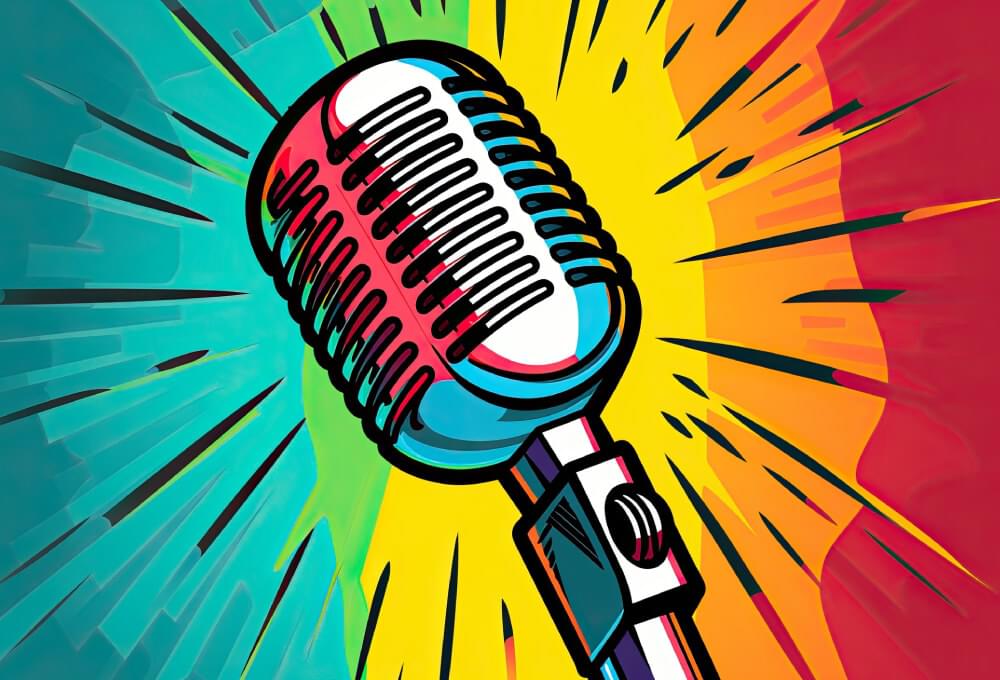
It’s no secret that podcasts are booming! By 2023, the global podcast audience had surged to over 464 million listeners, and projections indicate it will reach 504.9 million by 2024. Each listener, on average, devotes an impressive 7 hours per week to their preferred podcast app.
In terms of industry scale, the podcasting sector has ballooned to an estimated $23 billion as of 2023. However, this figure is set to skyrocket to over $100 billion by 2030, highlighting the industry’s remarkable growth trajectory.
But why bother with podcast subtitles?
Podcast subtitles are making waves, and there is one serious reason for this. Three major podcast platforms recently faced lawsuits for not offering podcast subtitles on their popular mobile apps.
While this legal action could have big implications for the podcast world, such as requiring transcripts similar to how streaming services provide closed captions, there are plenty of other reasons for podcasters to create transcriptions beyond just legal compliance. We will get into those reasons later.
What are Podcast Subtitles?
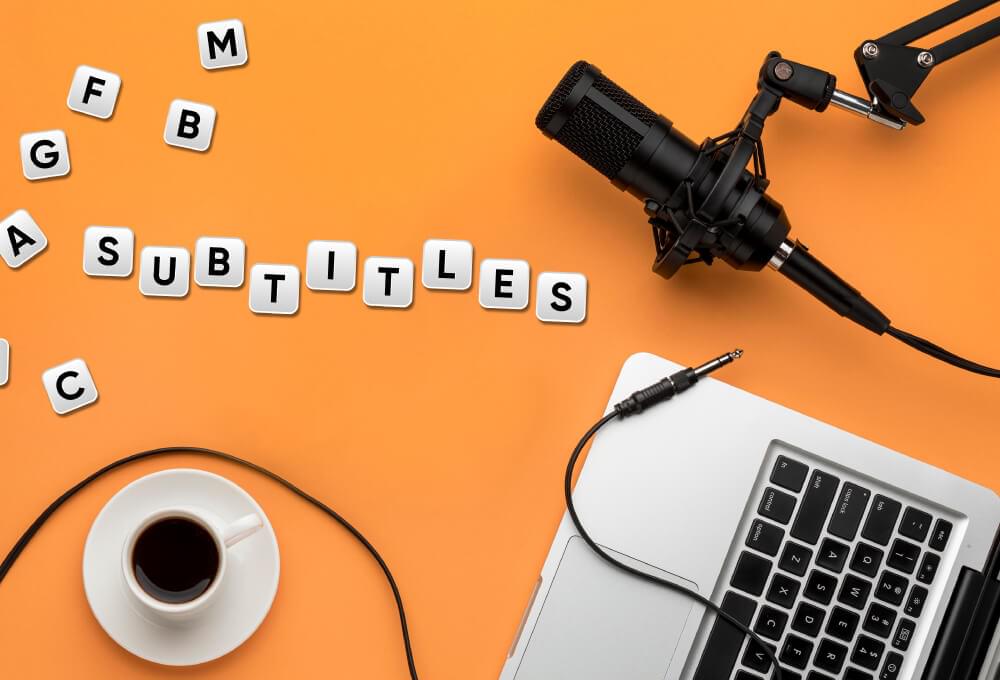
Podcast subtitles or transcription is the process of turning the spoken content of your podcast into written text. There are two main ways to do this:
- Use an AI-based podcast-to-text generator that automatically transcribes the audio for you.
- Manually transcribe while listening to the podcast.
Both methods help you create a written version of your podcast, which has several benefits. It makes your content accessible to those who prefer reading, and it can boost your visibility on search engines.
Top 3 Benefits of Podcast Subtitles and Transcription
As promised earlier, let’s highlight all the lucrative reasons why podcasters prefer to provide podcast subtitles and transcriptions despite the global audio boom:
#1: Increasing Accessibility Through Podcast Transcripts
Podcasts are an amazing way to tell stories, but they’re not perfect. Audio alone can leave out around 48 million Americans who are deaf or hard-of-hearing.
You can transcribe to improve podcast accessibility and open them up to a wider audience who might otherwise miss out. Plus, relying solely on audio can be tricky for non-native English speakers and in certain situations. What if your dedicated listeners can’t hear your latest episode because they’re on a noisy bus? Or what if their headphones are not working and are stuck in a quiet hospital waiting room? With a transcript, they can still enjoy your podcast.
#2: Boosting Podcast Visibility with SEO
When you transcribe your podcast episodes, search engines like Google, Yahoo, and Bing can understand and analyze your content. While they can’t directly interpret audio, they can read and index podcast transcripts.
This makes your podcast searchable online, increasing the chances of people finding it when they search for related topics.
📣 An Interesting Case Study - This American Life
This American Life, an American weekly hour-long radio program, saw a 4.36% increase in inbound traffic after publishing audio transcripts of their entire archive.
Their case study revealed that:
- Inbound traffic via search increased by 6.68% due to podcast transcripts.
- Inbound links increased by 3.89% because of the transcripts.
- 7.23% of all unique visitors viewed at least one transcript.
If you use YouTube to attract listeners, you can upload your podcast transcript and add closed captions to your videos. Closed captions not only improve YouTube and video SEO but also help new listeners discover your content and make it easier for returning listeners to find and share their favorite episodes.
#3: Repurpose to Maximize Your Podcast Content Reach
After putting in the effort to create ONE fantastic podcast episode, why stop there? Adding a transcript can help you extend the reach of your content!
One podcast episode can be repurposed into multiple other forms of content. Many podcasters upload video versions of their episodes on YouTube or transcribe trending podcasts of their channels and convert them into blog posts.
Text-based blogs remain integral for driving traffic to your website. Instead of creating entirely new written content for your blog, you can save time by using podcast transcripts for quotes, content inspiration, and more.
Additionally, some people prefer reading over listening to audio. With transcripts, you can cater to these audiences and allow them to enjoy your podcast in their preferred format.
Related: Blog Vs Podcast: Which is Better for Your Business?
Some ideas for repurposing podcast content:
- Transform quotes into social media snippets
- Create blog posts for podcast recaps and related topics
- Use transcripts into email newsletters and marketing campaigns
How to Create Podcast-to-Text Transcription?
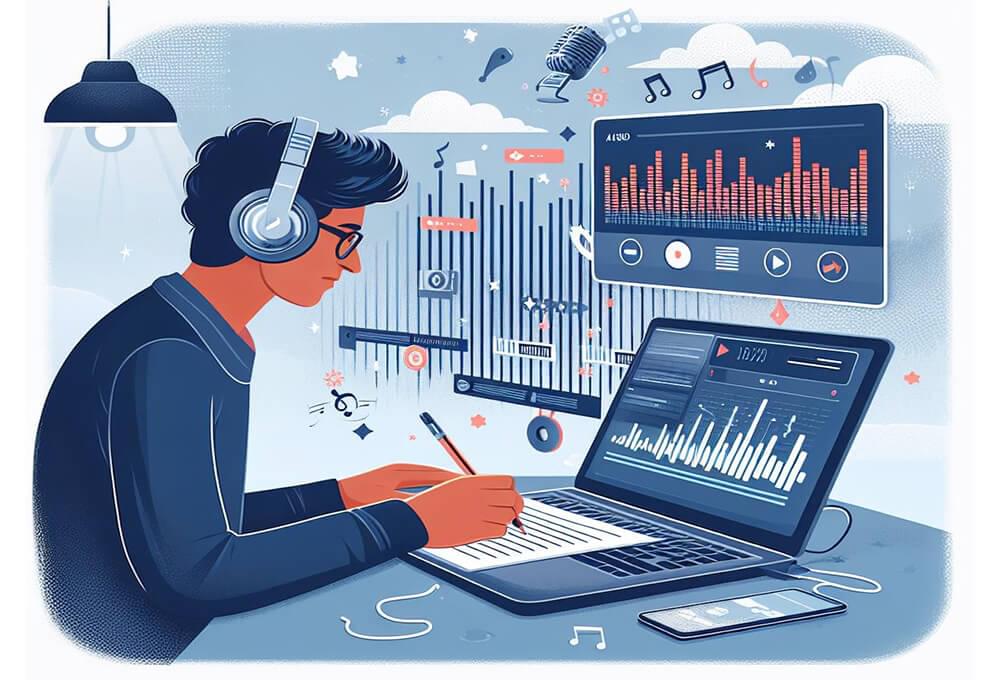
Now that you know the mouth-watering benefits, let’s get into the ways you can transcribe your podcasts easily. There are a couple of methods. To avoid any confusion, we will also enlist the pros and cons of each. So, you can make a smart choice that suits you better. Let’s get into it:
Step One: Select a Podcast-to-Text Transcription Method
When it comes to transcribing your podcast, you have a variety of methods to choose from. Here are some popular options:
Method One: Software based on Artificial Intelligence
With an AI-based podcast-to-text generator, like SubtitleBee, you can get accurate transcripts quickly in just a few clicks and save both time and money
These tools offer features like timestamps and speaker labels for a detailed text version of your podcast. They also provide audio cleanup services to enhance transcript accuracy. Explore different AI transcription tools to find the one that best suits your needs and simplifies your transcription process.
Pros:
- Multilingual Support: SubtitleBee can provide podcast-to-text files in various languages, including English (US and UK), Spanish, French, German, Japanese, Chinese, Filipino, Russian, Thai, and more.
- High Accuracy: You can trust SubtitleBee for precise and reliable transcription, making it suitable for both professional and personal use.
- All-in-One Editing: SubtitleBee doubles as a versatile media editor, allowing you to transcribe and edit your podcast. It offers basic and advanced editing features like noise reduction, speed curve adjustment, and voice changer.
- User-Friendly Interface: The online workspace provided by SubtitleBee is intuitive and easy to use, ensuring a smooth experience for users.
- Web-Based Solution: You don’t need to download bulky software. SubtitleBee operates online, providing convenience and accessibility without the need for installations.
Cons:
- Not Always 100% Accurate: While SubtitleBee strives for accuracy, there may be occasional transcription errors, which you can manually check and edit.
- Difficulty with Accents and Unfamiliar Words: Certain accents and unfamiliar words may pose challenges for SubtitleBee, leading to potential inaccuracies in transcription.
Method Two: Manual Podcast-to-Text Transcription
Also referred to as DIY transcription, manual podcast transcription involves carefully listening to the podcast audio and typing out the spoken words exactly as they are heard. This method needs keen attention to detail, excellent listening skills, and a good understanding of the podcast topic.
Pros:
- Contextual Understanding: You can capture the context, including filler words, pauses, and implied meanings, accurately representing the speaker’s tone and intent.
- Adaptability and Quality Control: It provides flexibility in adapting to specific transcript styles and terminology preferences while enabling real-time error correction, making it suitable for podcasts with sensitive content.
- Confidentiality and Data Security: Since you transcribe your own podcasts, your data and information remain confidential and secure, minimizing the risk of leaks.
Cons:
- Time-Consuming: Manual transcription can be time-consuming, especially for lengthy podcast episodes or podcasters with limited resources.
- Human Error: Fatigue, mispronunciation, and accents may lead to unavoidable human errors during podcast transcription.
Method Three: Podcast-to-Text Transcription Services
Transcription services use specialized tools or professional transcribers to convert your podcast into written text, saving you the effort of doing it yourself. These services often offer additional features like timestamps for reference and speaker identification for clarity.
Pros:
- More Accuracy: Skilled transcribers can capture language nuances, accents, and background noise effectively, which is important for podcasts with difficult words and terms in legal transcription or technical content.
- Speaker Identification: Transcription services accurately identify and differentiate between multiple speakers, even in cases of similar voices or overlapping speech, making them ideal for interviews or group discussions.
- Handling Complexity: Human transcribers are better equipped to handle specialized vocabulary, technical terms, and cultural references, making them suitable for podcasts covering academic or niche topics.
- Access to Expertise: Professional transcribers bring skills, experience, and industry-specific knowledge to ensure accurate transcripts, often specializing in particular fields or industries.
Cons:
- Human Dependence: The availability of human transcribers can impact transcription turnaround times, leading to delays if resources are scarce.
- Potential Bias: Human transcribers may inadvertently introduce personal interpretations into the transcript, affecting its neutrality and objectivity.
- Cost and Scalability Challenges: Hiring human transcription services can be costly, particularly for large-scale projects, and finding and retaining transcribers may pose scalability issues.
Step Two: Prepare Your Recording
A top-notch audio quality for your podcast is very important before you start transcribing. Follow these simple tips to get your recording ready:
- Choose a Quality Microphone
- Select a Quiet Location
- Use Noise Removal Tools
Step Three: Transcribe Your Podcast
Once you’ve chosen your transcription method and ensured your recording is prepped, it’s time to start transcribing your podcast.
We have got these simple steps to guide you through the process:
- Listen closely: Play the podcast episode and pay attention to the conversation. Note speech patterns, accents, and any unique words or phrases. Keep track of these details as you transcribe.
- Take breaks: Don’t hesitate to pause and rewind when needed to maintain accuracy. If you miss something, go back and listen again to ensure you capture it correctly.
- Consider transcription tools: Using a reliable podcast-to-text software or tool can simplify the process. These tools can add timestamps, correct errors, and provide shortcuts to speed up transcription. SubtitleBee, for instance, is an AI-powered application that offers accurate podcast transcriptions in multiple languages, saving you time and effort.
Bonus Tips to Create a Flawless Podcast-to-Text Transcription
We know you want your podcast to be searchable and readable through transcription, but it requires attention to detail.
Here are some tips that successful podcasters are using to create incredible podcast transcriptions:
- Add Timestamps: Timestamps are helpful markers for your audience. They’re particularly handy for longer episodes or discussions covering various topics. You can add timestamps at regular intervals or whenever you transition to a new subject. Your readers can quickly locate the sections they’re most interested in without having to scroll through the entire document.
- Identify Speakers: Clarity on who is speaking is super important in podcasts with multiple speakers. You can put the speaker’s name in bold, followed by their words and a colon. Start a new line for each speaker to make sure that the transcript is easy to follow. This simple formatting makes it clear who’s saying what, improving the readability of the transcript.
- Display Transcripts on Your Website: To make your podcast transcripts easily accessible and improve your website’s SEO, you should publish them directly on your site. Place the transcripts after your show notes in plain text or HTML format. So, your audience can easily locate them.
- Describe Sound Effects and Music Cues: Don’t ignore describing significant sound effects and music cues in your podcast-to-text transcript. These descriptions provide context and boost comprehension, especially for those who may have difficulty hearing or prefer reading.
- Improve Readability: Break long speeches into paragraphs while transcribing, even if they’re from the same speaker. This improves the text’s readability and comprehension, providing readers with visual breaks as they engage with the content.
Related: Your New Podcast Marketing Blueprint: 14 Ways to Improve Your Following
Want to Transcribe Your Podcasts in Minutes?
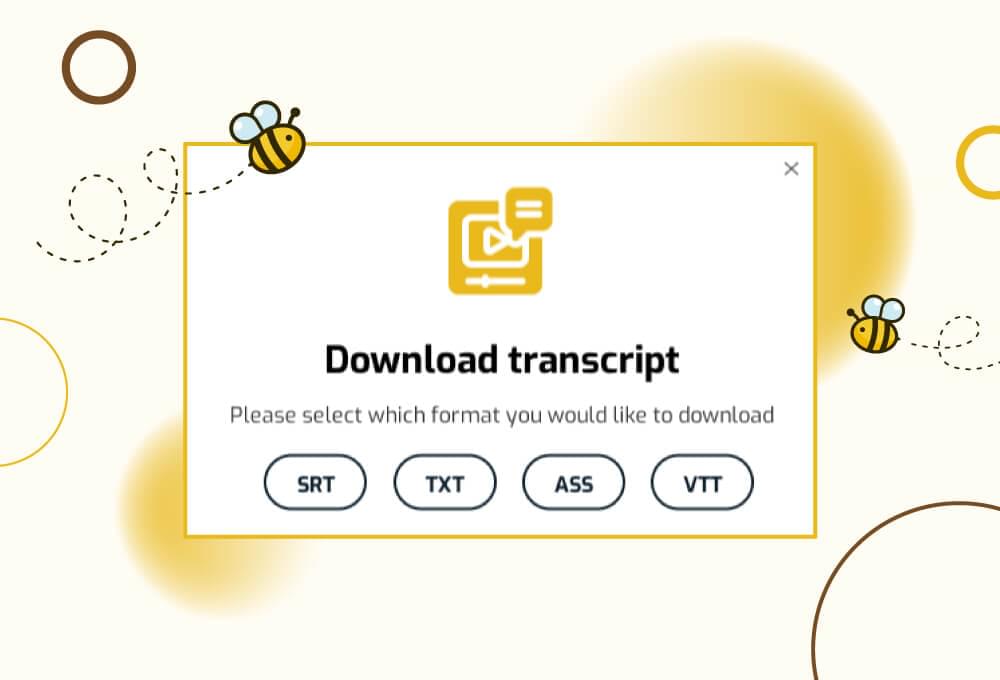
Creating podcast-to-text transcriptions can significantly boost accessibility and audience reach.
While there are various methods available, consider factors like time, effort, and costs associated with manual transcription or professional services.
At SubtitleBee, we prioritize solutions that save time. Our platform offers a reliable and efficient transcription solution, ensuring accuracy and a hassle-free process. Explore all the benefits of podcast subtitles and transcription with SubtitleBee today! Get free audio transcription in various formats like SRT, TXT, ASS and VTT or check out our pricing options to find a suitable plan for your bigger projects.
Add and translate your subtitles to more than 100 languages with high accuracy




